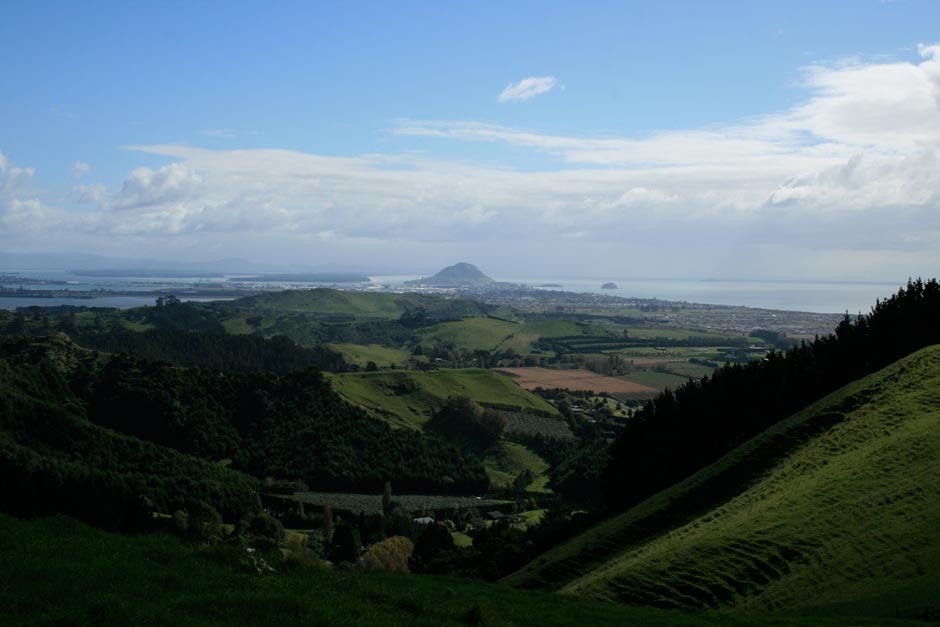
Pāpāmoa (c. 1460-1700)
Outstanding cultural landscape
At least since the time of the Tākitimu waka, the western Bay of Plenty has been an abundant food basket. The evidence for this lies here at Pāpāmoa, where a nationally significant pā complex straddling ignimbrite (volcanic) hill country once watched over fertile coastal dune plains and rich coastal fisheries. If radiocarbon dating is correct, settlement began on the plain about 1400. For the next 300 years the people prospered, harvesting their crops and fisheries, occupying and abandoning sites in accordance with the kumara cycle and soil fertility. Today’s subdivisions and sprawl are oozing their gimcrack way over an ancient palimpsest of kāinga, garden soils and swamp pā.
But look to the hills. Here, as elsewhere in the North Island, Māori fortified their settlements as competition for resources intensified. The Bay of Plenty still has fine examples of ancient hill forts at Maunganui, Mangatawa and Pāpāmoa. The Papamoa Hills offered good views in all directions at an inevitable point of inter-tribal tension between Ngāi Te Rangi and Arawa. Archaeologists have located about 60 sites – pits, terraces and, of course, pā. Pā range from a massive 7 ha (Wharo pā) down to 0.15 ha. The oldest was begun some time after 1460 and they were all built by 1700. The scientists have given them number-names that make them sound like U-boats, but the two largest pā also have proper names. The largest, Wharo (U14/166,167), on the spine of a ridge with three ‘limbs’ on side spurs, has nine separate defended units. Karangaumu (U14/238), probably the earliest and full of large storage pits, has eight defended units. It sits atop the summit of Papamoa Hill and may have been rebuilt at least once. At the other end of the scale, little U14/1660 occupies a knoll on a ridge below Karangaumu.
This sprawling cultural landscape is more important than its individual components. Here on the coastal plain and along the rolling hillsides of Pāpāmoa is the record of the lengthy evolution from Polynesian colonists to the Māori who would encounter European society.
Late in 2000, in the face of the threat posed by soaring land values and development pressure, local authorities conditionally approved the creation of a regional park in the Papamoa Hills to continue to tell that story to future generations. The Papamoa Hills Regional Park (Te Rae-o-Papamoa) opened officially in 2004 and two years later a conservation plan was published to guide its future use.
Further information
This site is item number 7 on the History of New Zealand in 100 Places list.
On the ground
There is an information board by the car park.
Websites
Books
- Kevin L. Jones, The Penguin field guide to New Zealand archaeology, Penguin, Auckland, 2007
- Nigel Prickett (ed.), The first thousand years, Dunmore Press, Palmerston North, 1982


Community contributions